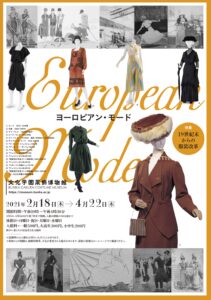Bunka Gakuen University is a university that studies fashion, design, and liberal arts, and has some valuable historical materials on fashion.

An interesting exhibition “European Mode” will be held at the Bunka Gakuen Fashion Museum in Shinjuku, where you can see how women’s fashion changed in Europe from the 18th century to the 1980s.
Consisting of two sections, the main section shows 250 years of general fashion trends, and the second section focuses on trends from the end of the century to the 1930s.
In 18c, the Fashion Trend Center was the European court. The details of the dress, such as the shape of the sleeves and the length and shape of the skirt, have changed over the years.
That means that fashion trends are related not only to women’s tastes at the time but also to the political, economic, and social factors of each era.
After the French Revolution, the flashy and gorgeous Rococo style was replaced by a simple style, and cotton muslin dresses became popular.
However, France did not have cotton and imported large amounts of cotton from the United Kingdom that could go bankrupt.
As the Industrial Revolution and the social paradigm shift progressed, the younger generation and the general public have influenced fashion trends.
As many women began to work outside and behave like men, women’s fashion shifted to a more functional and sporty style.
These histories can be learned from well-conditioned vintage gorgeous dresses, shoes, accessories, luxury women’s underwear, and several documents in the museum’s collection.
Don’t be disappointed if you found only a Japanese explanation at the venue. They have English pamphlets.
https://museum.bunka.ac.jp/english/